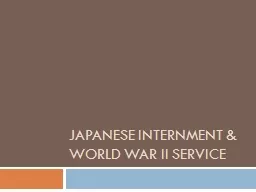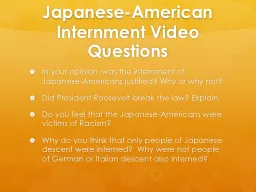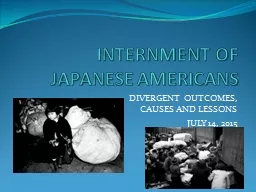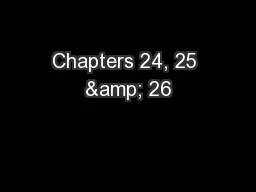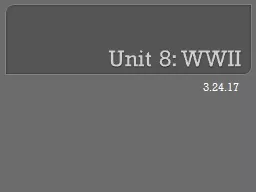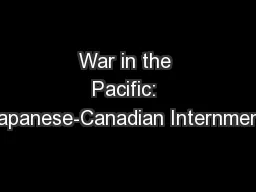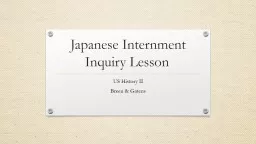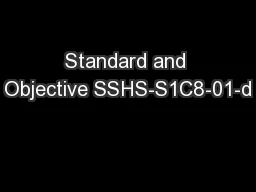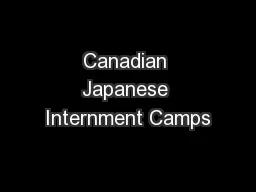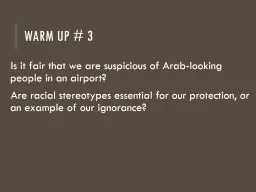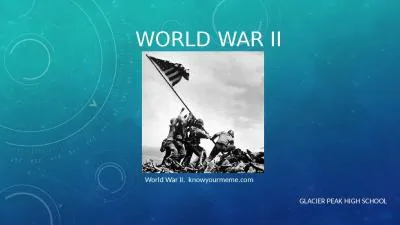PPT-JAPANESE internment & world War II Service
Author : jane-oiler | Published Date : 2016-11-08
Japanese on the West Coast 112000 Japanese Americans living on the west coast Some were Issei Native born Japanese immigrants Their children the second generation
Presentation Embed Code
Download Presentation
Download Presentation The PPT/PDF document "JAPANESE internment & world War II S..." is the property of its rightful owner. Permission is granted to download and print the materials on this website for personal, non-commercial use only, and to display it on your personal computer provided you do not modify the materials and that you retain all copyright notices contained in the materials. By downloading content from our website, you accept the terms of this agreement.
JAPANESE internment & world War II Service: Transcript
Japanese on the West Coast 112000 Japanese Americans living on the west coast Some were Issei Native born Japanese immigrants Their children the second generation of Japanese Americans were called the Nisei they were born in the United States and were full US Citizens. 1. ) Just . 10 weeks after the attack on Pearl Harbor, President Roosevelt signed Executive Order 9066, authorizing the War Department to designate “military areas” as “exclusion zones” where citizens could be forcibly removed. It was carefully worded and made no specific reference to Japanese-Americans, but the intention of the order became clear when military officials were announced that all Japanese-Americans on the West Coast would be relocated to internment camps for the duration of the war. . First World War. Recruiting. ‘Lads you’re wanted, go and help’. On the railway carriage wall. Stuck the poster, and I thought. Of the hands that penned the call. Fat civilians wishing they . ‘Could go out and fight the Hun.’. Hajdasz. . JFK Middle School. . Utica City School District. . Khajdasz@uticaschools.org. Japanese-American Internment. After the attack on Pearl Harbor, many Americans questioned the loyalty of Japanese Americans, fearing they may act as spies or help Japan invade the U.S.. In your opinion, was the internment of Japanese-Americans justified? Why or why not?. Did President Roosevelt break the law? Explain.. Do you feel that the Japanese-Americans were victims of Racism?. DIVERGENT OUTCOMES, CAUSES AND LESSONS. JULY 14, 2015. INTERPRETATIONS. VERSION ONE:. INTERNMENT WAS FUNDAMENTALLY THE PRODUCT OF BROAD, DAMNING FACTORS WITHIN THE AMERICAN POPULATION WITH RACISM FOREMOST AND ECONOMIC RIVALTY, XENOPHOBIA, AND TERROR OVER JAPANESE MILITARY SUCCESSES AS CONTRIBUTORY FACTORS.. World War II. From Isolation to War. - Congress further prevented international involvement by passing a series of . Neutrality Acts. . - The 1st Neutrality Act prevented the US from providing weapons to nations at war.. WITH . ULTRA-NATIONALISM. World War One. In order to address . fears. and . perceived threats . at home, Prime Minister Robert Baldwin’s government created a piece of legislation that would give them . 3.24.17. Timeline. Review the major events of Japanese-American internment & . talk with . your row. :. What do you know about Japanese-American internment?. What surprises you about the timeline?. & The Atomic Bombs. Internment Camps. War Measures Act. : waiving of habeas corpus and right to trial, bans on political and religious groups, restrictions of free speech, confiscation of property and…. US History II. Breen & Gatens. Warm Up. You will be answering the question, “. Why were . Japanese Americans . interned during World War II. ?”. What does internment mean? -. the . state of being confined as a prisoner, especially for political or military . Strand 1: American History. Concept 8: Great Depression and World War II. PO 2. Describe the impact of American involvement in World War II:. d. Japanese, German, and Italian internments and POW camps. War on the Home front. QUESTION 1: . What is more important to you: Civil liberties (democracy, individual freedoms, rights etc.) OR National Security. QUESTION 2:. Would this change during war? Why or why not?. Are racial stereotypes essential for our protection, or an example of our ignorance? . Japanese American Internment. Background Details. Executive Order 9066. Issued by FDR in February 1942. Relocated nearly 120,000 Japanese Americans – 62% of whom were American citizens. World War II. . knowyourmeme.com. Navajo Code Talkers . by Nathan . Aaseng. Describes how the American military in World War II used a group of Navajo Indians to create an indecipherable code based on their native language .
Download Document
Here is the link to download the presentation.
"JAPANESE internment & world War II Service"The content belongs to its owner. You may download and print it for personal use, without modification, and keep all copyright notices. By downloading, you agree to these terms.
Related Documents

